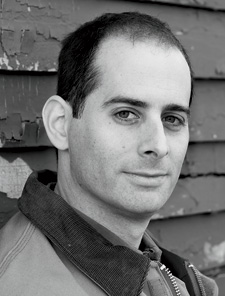 |
Thanks to a steamy, little-known fact that he uncovered in the disease section of Boston College’s library, Michael Lowenthal hit pay dirt. His discovery? That during World War I, the U.S. government arrested some 30,000 women suspected of carrying venereal disease and held many of them against their will—sometimes for up to a year—until they were cured. After stumbling on this nefarious morsel, Lowenthal plunged into research for Charity Girl, his best-selling novel. The book follows Frieda Mintz, who struggles for love and independence only to find herself ensnared in the national anti-vice crusade. Lowenthal spoke with Victoria Lautman from his home in Boston.
 |
Q: So there you were, innocently reading about blindness, when one little sentence rocked your world.
A: Tell me about it! I was working on an essay when I sat down and started reading through Susan Sontag’s AIDS and Its Metaphors. And I came across a single sentence that compared the incarceration of American women during World War I to the internment of Americans of Japanese ancestry during World War II. It just blew me away. I thought, How could I be so dumb not to have heard about this?
Q: Except nobody really had heard about it.
A: Well, I can’t claim total credit: There are some scholarly articles and chapters in books, but it just hadn’t gotten out in the popular consciousness. As far as I can tell there was almost no protesting about the program. And there was also so much shame. No one was going to be sitting at the Thanksgiving table bringing up that experience of Grandma’s when she was young. . . .
Q: Speaking of Grandma, would yours have been thrilled that you co-opted her name, Frieda, for the heroine?
A: Oh, she would have been utterly horrified.
Q: What was a “charity girl” and why were so many of them incarcerated?
A: These were the young women who, for the first time in our society, left home to live alone and work in the cities. They worked long hours and earned little, so if they wanted a night on the town, they needed men to pay. There might or might not be intimacy afterwards, but the charity girls were deemed “suspicious,” defying social standards by their actions and even their clothing. Only a third of those detained were charged with prostitution.
Q: Did having to re-create very intimate moments in Frieda’s life ever stump you?
A: I was stumped by everything. At every turn I found myself thinking, How the heck am I supposed to know that? I’d always remind myself that these people may have lived a hundred years ago, but they were human, and the only things that changed were the props.
Q: There’s a high “yecchh” factor at points during Frieda’s barbaric medical treatment. You must have slogged through some weird research material.
A: I did. And I have to admit that I sort of liked that a lot more than I should have. It was so gross and alien, but I love watching people squirm in print. So to read the social workers writing reports about things they clearly didn’t want to discuss, using polite early 20th-century language—that, I enjoyed.
Q: And have you read any other inspirational sentences lately?
A: No, and it’s awful! I feel spoiled now, having gotten an entire novel out of one little line.
Photograph: John Gransky



